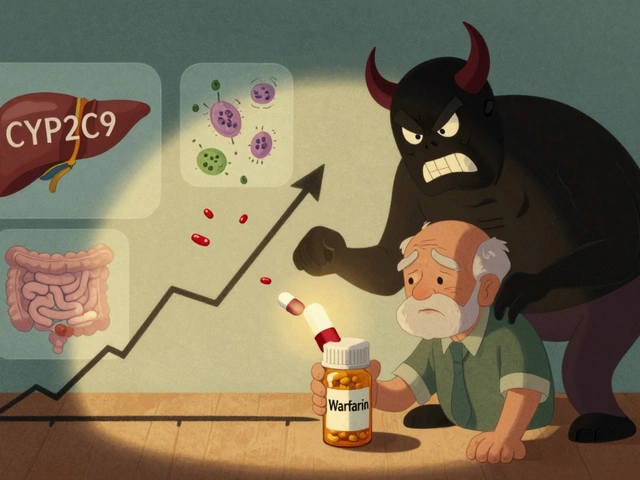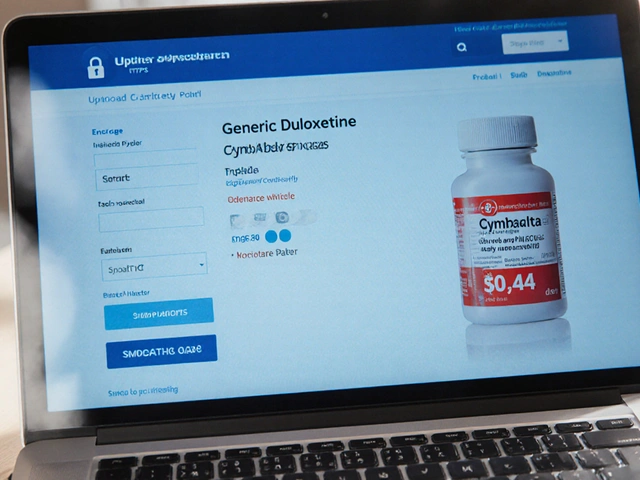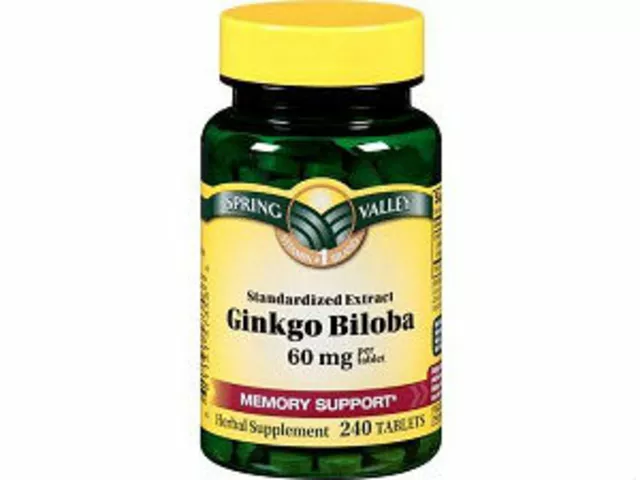Iverheal: Uses, Safety, Dosage, and Real-World Facts
Few medications spark as much curiosity and chatter as Iverheal. Some people swear by it, others raise their eyebrows, and pretty much everyone has strong opinions somewhere in between. You might have seen it pop up on social media, hear folks chat about it at the park, or maybe it’s the reason you’re reading this right now. What’s the real story behind this little pill? Is it a miracle treatment, a misunderstood tool, or something else entirely? You deserve the full scoop, without hype, rumors, or mystery.
What Is Iverheal and How Was It Developed?
Iverheal is a brand name for ivermectin, mostly known as an antiparasitic medication. The story behind ivermectin reads almost like a scientific adventure. Back in the late 1970s, Japanese scientist Dr. Satoshi Ōmura found some bacteria in soil samples that turned out to be gold—well, not actual gold, but a compound called avermectin. That compound was tweaked to become ivermectin by William Campbell, an Irish scientist. They both scored the Nobel Prize in Medicine in 2015 for this finding (not something that happens every day in drug development!).
This med first took off in the 1980s as a way to treat river blindness in Africa, a disease caused by the worm Onchocerca volvulus. For millions, ivermectin was life-changing. It killed the worms and let people keep their sight. In the animal world, too, ivermectin is a big deal: veterinarians use it to treat mites, mange, and worms. So when you see a box of Iverheal, you’re holding a pill that’s seen action across continents, species, and decades.
But it’s not all heroics and success stories. Iverheal, like any drug, has its boundaries. It was never meant to cure every infection, and its uses have changed based on both research and, sometimes, public perception. The key thing about any medicine—including this one—is knowing when, why, and how to use it right. You don’t want to gamble with your health on half-truths.
How Does Iverheal Work in the Body?
Let’s talk shop—literally, how Iverheal gets the job done. Its secret weapon is the way it targets parasites. Ivermectin latches onto channels in the nerve and muscle cells of worms (called glutamate-gated chloride channels—sounds complicated, works simply), basically paralyzing and killing the bugs. Humans and most mammals don’t have these channels, so the drug doesn’t wipe out our nerves like it does the parasites. But that doesn’t mean you can chug handfuls of it without consequences; the difference is in the details and the dosage.
Doctors prescribe Iverheal for roundworm infections, scabies (a skin problem caused by mites), and strongyloidiasis. It’s also used for head lice and, in less-common scenarios, certain other tropical diseases. The reason? The drug gets into the bloodstream, finds its target, and disrupts the pests’ ability to live, feed, and reproduce. Once paralyzed, your immune system clears the invaders out. Pretty slick, right?
It’s tempting to think, “If it works for parasites, what about viruses or bacteria?” Here’s where it gets dicey. Iverheal is Iverheal, an antiparasitic agent, not an antiviral superstar. Big studies in top medical journals show no real effect against viruses like the flu or COVID-19 in humans. The science is clear: outside of specific parasitic infections, expecting a miracle is like hoping a wrench will fix your iPhone.
All meds have safety limits, and while Iverheal mostly clears from the liver, high doses or misuse can cause toxicity. That means nausea, confusion, or worse. The drug’s “window”—the range where it works without danger—is pretty wide, but not infinite. Always, always, you want the dose to fit the purpose.

Common Uses and Dosage: What Do Doctors Recommend?
Walking into a pharmacy or staring at a website that sells Iverheal, it’s easy to get lost. So let’s get specifics. For adults dealing with strongyloidiasis (intestinal roundworm infection), the most common dosage is a single dose of 200 micrograms per kilogram of body weight. For scabies, usually, it’s one dose, repeat in a week. Head lice? Pretty similar. Always take with a glass of water, on an empty stomach (that helps your body absorb it better). Simple, but important details.
Here’s a quick look at typical treatment guidelines in an easy-to-read table:
| Condition | Typical Dosage | Repeat Dose? | Notes |
|---|---|---|---|
| Strongyloidiasis | 200 mcg/kg, once | No | Only one dose; see doctor if not resolved |
| Scabies | 200 mcg/kg, once | Yes, after 7 days | May need topical creams too |
| Head Lice | 200 mcg/kg, once | Yes, after 7 days | Shampoo/hair combing advised |
| River Blindness | 150 mcg/kg, once yearly | Yearly | Given in mass-treatment campaigns in endemic areas |
The dosage, of course, depends on your weight and medical history. Kids and elderly folks, especially those with other health problems, may need doctors to tailor things differently. And no, you should never start popping Iverheal based on what you read in a Facebook group—prescriptions exist for a reason.
One thing people mess up? Mixing Iverheal with other meds without telling their doctor. It can interact with blood thinners, anti-seizure drugs, and even some antibiotics. If you’re on medication, make sure your healthcare provider knows the whole lineup. Don’t risk weird interactions that can throw your health sideways.
Another tip: if you miss a dose, take it as soon as you remember, but don’t double up. More isn’t better here. Let your system settle before you try to play catch-up.
Most pharmacies will not give you Iverheal unless you have a legit reason. Every major medical organization, from the CDC to the World Health Organization, recommends sticking to approved uses. If you see it sold as a “miracle cure” for unrelated stuff, run, don’t walk, the other way.
How Safe Is Iverheal? Side Effects, Warnings, and Safety Tips
For all its benefits, Iverheal isn’t a risk-free ticket. The average person taking typical doses rarely has major side effects, but “rare” isn’t the same as “never.” What can you expect? Some people get mild symptoms: aches, nausea, maybe some dizziness. Usually, these fade on their own. More severe side effects—confusion, vision problems, seizures—are very rare and usually linked to large doses or wrong use. That’s why you want to stick with what a doctor tells you, not what some YouTube video claims.
People with liver, kidney, or immune issues need to be extra cautious. If your liver isn’t working right, ivermectin can build up in your system and cause trouble. Pregnant or breastfeeding? The advice is simple: don’t take Iverheal unless there’s no safer alternative. There’s limited data on kids under five or weighing less than 15 kilograms, so play it safe and ask a specialist.
The Centers for Disease Control and Prevention (CDC) says that animal forms of ivermectin are not for human use—seriously, don’t take horse paste thinking it’s the same. The concentrations and additives in animal meds can hurt you, even if the active ingredient is similar.
Doctors recommend close follow-up the first time you take Iverheal, especially if you’re treating a new infection. Allergic reactions are rare but possible. If you get hives, trouble breathing, or sudden swelling, get checked ASAP.
There have been a few stories about fake brands or contaminated pills sold online. Buy only from reputable sources or licensed pharmacies. If your pills look odd, dusty, or different than what you’re used to, don’t risk it. Send a photo to your pharmacist or ask before swigging it down.
For folks with HIV/AIDS or immune-suppressed states, some studies show that untreated strongyloidiasis can become life-threatening. That’s one spot where Iverheal can be a literal lifesaver, but only if it’s used by the book. Don’t be shy to ask questions or get a second opinion before starting.

Smart Tips, Facts, and What’s Ahead for Iverheal
The journey of Iverheal isn’t just about treating worms or lice. It’s a lesson in how health info can spread—sometimes faster than science itself. During the COVID pandemic, ivermectin became a hot topic, not always for the right reasons. High-quality clinical trials done in 2021 and 2022 in the U.S., Brazil, and the U.K. showed no meaningful effect of ivermectin in treating or preventing COVID in hospitalized patients. The American Medical Association and the U.S. FDA went out of their way to say: “Don’t use it for COVID.” Yet, rumors kept flashing online.
If you want the best out of any medicine (Iverheal included), be specific. Know the official guidelines, use the proper dose, and avoid knockoffs. Always check that your pharmacy or online seller is legitimate. One study from 2023 showed that about 10% of so-called ‘Iverheal’ tablets bought online didn’t have the right dosage—or were counterfeit. Don’t risk it to save a few bucks.
When you’re prescribed Iverheal, jot down any symptoms after your first dose. This will help your doctor tweak your care as needed and catch anything weird before it gets worse.
Want more solid info? The FDA and CDC both have free online databases where you can search for safety alerts or check if your meds are recalled. Print out the instructions and keep them handy—don’t rely on memory alone. Parasites are stubborn but so are medical facts; default to the science every time.
The future for Iverheal looks steady—no miracle transformations, but reliable treatment for parasitic diseases. Some researchers in 2024 tried combining ivermectin with new antibiotics for rare infections, but these are still in the early stages. No wild leaps expected in the next couple of years, just steady, measured advances.
If you’re ever unsure, don’t play guessing games. Ask your pharmacist, call your doctor, or hit up your local health department with questions. There’s no shame in double checking. That’s how health gets safer, smarter, and better—one right answer at a time.







11 Comments
Sandy Gold
July 18, 2025 at 05:19
Honestly, I don't see why everyone is so eager to jump on Iverheal without scrutinizing it properly. There's always some hype around these “miracle” meds, but how often do people actually check the side effects in-depth? I'm skeptical about the claims of effectiveness; real-world applications often fall short of those glossy ads.
Also, dosage recommendations tend to be a mixed bag online. Folks either underdose hoping for magic or overdose and face consequences. I’d suggest a more nuanced approach than what's usually promoted. Has anyone here actually done the deep dive into clinical trials or regulatory assessments?
Don’t get me wrong, I’m not outright dismissing it, but caution is overdue in this era of rapid drug endorsements.
Tiffany Clarke
July 18, 2025 at 05:53
yeah exactly. i tried it & honestly not seeing the hype tbh.
felt kinda off after a few doses, nothing really explained clearly about side effects either. like, if it’s really safe, why is there so much uncertainty?
guess my experience isn’t unique tho cuz friends shared similar feelings after trying it. maybe it's better to wait and learn more b4 jumping on it.
Keri Henderson
July 18, 2025 at 06:43
Hold on, I think we’re overlooking something here. From what I’ve gathered, the key with Iverheal is definitely understanding the right dosage. Mismanagement is the main culprit for side effects, which is typical with many medications.
I've guided several people through it with positive results, emphasizing consistent monitoring and consulting healthcare providers before starting. Glad to see a thread focusing on real facts; misinformation is rampant.
So while caution is warranted, don’t dismiss it outright based on anecdotal experiences or scare stories. Proper use and respect for the drug’s guidelines make all the difference.
Frank Pennetti
July 18, 2025 at 07:33
Look, I gotta say, the whole “Iverheal is some breakthrough” narrative reeks of pharma manipulation. Too much BS jargon thrown around to confuse the masses. The real question is whether it genuinely meets its claims or if it’s just another placebo wrapped in slick marketing.
There’s been zero compelling, unbiased data that could convince a critical thinker. People are just swallowing it without questioning how this stuff interacts biochemically on a national scale.
We need facts, not fluff. And yet, it seems everyone’s too lazy to dig. Why is that, huh?
Shruti Agrawal
July 18, 2025 at 08:23
Hey folks, hope you all are doing fine. Reading through your comments, I just want to add a bit from the safety perspective. Iverheal, like any medication, has a profile of benefits and risks. It’s essential to use it under medical supervision, especially for people with pre-existing health conditions.
One thing many overlook is that side effects vary widely across individuals, depending on factors like age, weight, and other medications taken simultaneously. It’s not a one-size-fits-all solution.
So yes, cautious approach is best, but also don't let fear prevent accessing potentially helpful treatments.
Melissa Luisman
July 18, 2025 at 09:13
I've got to disagree with some of the pessimism flying around. The real-world data I've seen from verified users leans positive. Sure, side effects aren't negligible but they’re manageable with careful dosage.
Anyone ignoring the official guidelines and doing random self-medication is just asking for trouble. I’ve seen it too many times. Responsible usage backed by healthcare advice is the win here.
We have to be realistic about what to expect – it's not magic, it’s medicine.
elvin casimir
July 18, 2025 at 10:03
So many typos in the discussions here, makes it hard to take some seriously. That said, proper grammar is important when discussing something as critical as medication info. Clarity equals trust.
I'm all for facts but the lackadaisical approach to grammar and detail in some comments frankly undercuts the seriousness of the whole debate. If you want people to believe you, invest properly in your communication skills.
Also, dosages must be exact, not “kinda this or that.”
Mikayla May
July 18, 2025 at 13:56
I've been quietly reading this thread, and I wanted to share that from a medical standpoint, Iverheal requires strict adherence to dosage to minimize risk.
Doctors usually recommend a tailored approach rather than a generic dosage, especially given the variance in patient reactions. Real-world facts come down to proper medical advice and patient history consideration.
Self-experimentation can be tempting but hazardous. I always encourage consulting professionals before starting any new medication.
Joery van Druten
July 18, 2025 at 15:03
I appreciate the balanced views here. The important thing is to separate anecdotal experiences from clinical data. Both have their place but can be mistakenly conflated.
In my opinion, transparent sharing about side effects and cautious dosage monitoring needs to be emphasized more in any Iverheal discussion.
Users should be able to track their progress with healthcare provider involvement to avoid misunderstandings or misuses.
Robert Hunter
July 18, 2025 at 16:09
Thanks for all the inputs. I want to add a cultural perspective here. Access and acceptance of meds like Iverheal vary widely, even within the US. Some communities are more pragmatic about safety and evidence; others rely heavily on hearsay and anecdote, leading to confusion.
It’s crucial that educational efforts are culturally sensitive and accurate to bridge these gaps. This thread is a good start to fostering real conversation rather than hype.
We should all push for clear facts and encourage professional guidance universally.
Allan Jovero
July 18, 2025 at 17:16
Permit me a moment of pedantry here. In scientific and public health discussions, precision in language and information is paramount. Iverheal's pharmacodynamics and pharmacokinetics must be articulated with stringent terminology to avoid misconception.
Furthermore, dosage should be communicated exactly, ideally with standard units and adjustment parameters. Casual references and ambiguous statements only serve to blur understanding.
It’s folly to expect proper comprehension without a firm linguistic and factual foundation.
Let us elevate this conversation accordingly.